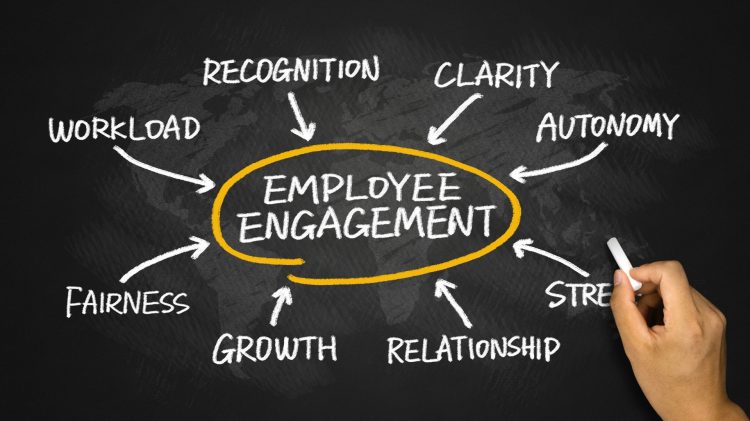
Employee Engagement
Employee engagement is widely recognised now as a great differentiator of organisational success. Yet it is very difficult to gain complete agreement on how to achieve employee engagement, this is because employee engagement a very complex multi faceted issue, just like people and organisations are multi faceted and need our tailored support.
Any attempt to take a one size fits all approach to employee engagement is likely to generate less success than a more tailored approach based on the circumstances, the organisation and its people. That’s why every employee engagement project we take on is treated differently. There are similar themes, and your employee engagement requires a tailored approach to suit your particular employee engagement goals. Read on to find out how.
What is employee engagement?
Employee engagement is workforce approach which is designed to create a climate, environment, or workplace ‘feel’ which encourages your employees to contribute more to your organisation’s success, and the achievement of your vision, and objectives in line with the values you wish to work by.
Notice that the objective of employee engagement activities isn’t to engage your employees. It’s an interesting paradox. The objective of employee engagement activities is to help you create a supportive environment or climate so that employee engagement can flourish quite naturally.
Employee engagement is a bit like gardening, you create an environment within which plants can naturally grow, you can’t force them to grow, and they certainly won’t grow in poor soil. Creating the right conditions enables you to produce a beautiful garden. When we help you to take the right approach to employee engagement, your equivalent of a beautiful garden will be advocate customers who buy again and again and encourage others to do the same.
Contact us to discuss generating more advocate customers
Is Employee Engagement worth the effort?
To help you create a self-sustaining organisation which consistently achieves or over achieves its objectives, our employee engagement support is definitely worth the effort, but like any good gardener will tell you, it can take time, depending on just how toxic your work environment is now.
One of the most common questions we get asked when delivering leadership or management programmes is “why can’t I get employee to stay?” or “why can’t I get people to do what I want them to do without constant reminding?” or “why don’t people take initiative these days?” The answer is typically the same or similar – because they are not fully engaged with their job or your organisation and we can probably help you with that, get in touch.
Benefits of employee engagement:
Leadership requires the existence of trust, and it’s this which can take time to build. Our leadership training is designed to help your people understand how trust works and how it is built over time to create an environment which fosters leadership and the application of discretionary effort. This is a different kind of motivated effort which when your people give it, can make enormous differences in the results achieved.
- Companies with top scores in employee engagement made twice as much net profit as those equivalent companies with low levels of employee engagement
- Companies in the top quartile of engaged organisations generated 2.5 times more revenue growth than those in the bottom quartile
- Top quartile companies had 40% less employee turnover, 12% higher customer advocacy, and 18% higher productivity than their lower quartile counterparts. (Source: engage for success.org)
If you think about it an engaged member of employee is far more likely to serve your customer well, be supportive of their colleagues and help your organisation to be more successful. Let’s face it, all of us have been on the receiving end of bad customer service and our reaction to that? We go elsewhere, even if it costs more because the cheap poor service is just not worth the pain and hassle it brings. We also instinctively know that the poor experience is probably not just down to the employee who served us.
Let’s go back to our gardening analogy shall we? The starting point with any employee engagement project is to evaluate your current position, first off, all have you got some of the basics right? You wouldn’t put a plant which needs lots of cool moisture in a dry hot position, so have you got the right people, with the right capabilities, or at least potential capabilities, in the right jobs.
You also need to equip people properly to do the job in order to get employee engaged – for example give them appropriate equipment and training. Making life difficult for your employees by overstretching them or limiting their ability to do the job is definitely not going to help employee engagement. We can help you with these kinds of assessment once we understand your situation we can build from there.
The basic currency of employee engagement is trust. If you have fostered an environment where people feel trusted, then they are much more likely to be engaged. To trust people, you need to be sure that they have the right capability to do the job and the right attitude to do it well. Equally, they need to feel that they can trust themselves to do what is expected of them and that you trust them to get on with the job. Training your managers and leaders how to develop trust through the organisation would be part of our approach.
I find it fascinating that Stephen Covey, author of “The 7 Habits of Highly Effective People” among many other titles, created the analogy of the “Emotional Bank Account” (EBA) which uses the idea of a bank account of trust between two people. The more you trust someone, the bigger the trust balance in the bank account. If you have an overdrawn EBA then you are likely to experience more cynicism and negativity from them. In a work context if there is low trust between the employee and the organisation or manager, then you are also likely to have low employee engagement.
The other interesting link to employee engagement here is that the EBA is dynamic. The account status can change very quickly, you can have a positive EBA move to a very negative EBA with one significant withdrawal, and, just like a bank account once you’re in the red, it can be much more difficult to get the account back into credit. On the plus side, when the EBA is very positive, it will sustain more negative pressure.
So, a low trust environment is likely to be more toxic to employee engagement and identifying employee expectations (deposits) and making clear your expectations of them is a very useful starting point. We guide your managers in how to do this very easily with remarkable results.
What can I do to improve employee engagement?
As outlined earlier the starting point with employee engagement is to ensure that your current environment is not toxic to employee engagement, a very important part of that is open communication about expectations and progress.
There have been many studies and polls both nationally and globally about employee engagement and thankfully there is plenty of data and experience to give you clarity about successfully engaging your employees and the actions you can take to do so.
From our experience of working with many organisations, much of the work around employee engagement is to do with Communication.
Communication to give clarity of direction, letting people know about progress towards objectives, feedback on performance of the team and the individual, generating two way dialogue about ideas and concerns, and recognition for a job well done.
The key levers in creating an environment which fosters high levels of employee engagement:
- Setting the destination:
- Managers as leaders:
- Aligning behaviours with values:
- Involve the team:
Using problem solving as an employee engagement activity also leads you very nicely into one of the most important other employee engagement activities – the conversation about their development. It’s a great opportunity to coach, mentor, guide and support. It’s really important that your leaders know how to do this well, so we provide coaching for this vital area.
As pointed out right at the beginning, every employee engagement situation is different but there are some common themes and enabling behaviours that apply to most if not all organisations.
We have been working with clients to help them develop their employee engagement now for over a decade and have developed a number of tools to help make your employee engagement journey that much more productive and successful:
Employee Engagement Climate Survey
The first is the Climate Survey. This tool is designed to identify the extent to which the key enablers of employee engagement are being applied within your organization and the actions you can take to improve the level of employee engagement.
Find out more about our employee engagement climate survey
Employee Engagement Consultancy
We bring an outside perspective to your organization, and lots of experience of helping clients like you to achieve your goals through employee engagement. We understand that employee engagement isn’t the goal, it’s a means for you to serve your customers more effectively and achieve your objectives.
So talk to us about your objectives, and let’s explore how we can help you.


